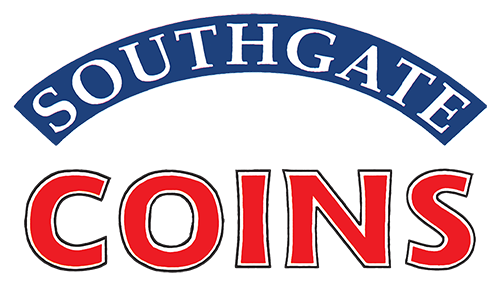By Rusty Goe
As a rare coin dealer operating a retail shop, I come face to face with gold every day. I can’t avoid the precious yellow metal. It’s in my DNA. For more than three decades, I have seen gold’s price rise, fall, rise again, plunge, and move sideways. Hardly a day goes by without me answering the question, “Is gold a good investment?” My standard answer, my long-term position is it all depends.
On what does it depend? you might ask. We can take that question into many different directions, but to simplify matters, I will follow three paths for now.
First is timing. How long will a person hold the gold, and what is his (or her) average cost per ounce over time? As an example, the price of gold stood at $272 an ounce when we opened our Reno coin shop in September 2001. If a person had bought, let’s say, 100 ounces at that time ($27,200 + 1,100 commission) and sold them 10 years later in summer 2011, when gold soared to $1,900 an ounce, he would have reaped a hefty return (670%). If, on the other hand, a person had bought 100 ounces of gold in summer 2011 for $190,000, and sold the same on April 15, 2013 (day of the big crash) for $135,000, she would have suffered a 30% loss. There are myriad scenarios we could use, but you get the idea.
Second is perspective. Why is the person buying gold in the first place? Does he (or she) want it as an insurance policy in case of a worst-case economic calamity? Does the person distrust the government? Is the sheltering of unreported wealth a motivation? Again there are many possibilities. The question of gold’s value as an investment would relate more to the role it played in a person’s pursuit of a safe haven than it would as a profitable trading vehicle.
Third is form. How is the gold a person has invested in manifested? Is it in bar form? Is it a piece of jewelry? Is it a stack (or stacks) of traditional bullion coins (Krugerrands, American Gold Eagles, etc.), or is it a rare numismatic item? Let’s compare gold in bar form to the metal as a rare coin.
We won’t use just any old rare coin, we’ll use a very special one from the Carson City Mint. The bar of gold we use doesn’t matter, it’s just a standard bullion item from the 1890s, representative of a quarter of an ounce of the yellow metal—the same weight as the rare coin in our example.
That coin is an 1876-CC $5 gold piece (half eagle), the finest known survivor from that date’s original mintage of 6,887. A prominent collector named John M. Clapp bought this specific $5 gold piece from a dealer for $5.15 in 1893, which was literally the coin’s value in gold at the time. Someone could have purchased a quarter of an ounce gold bar at the same time for the same price ($5.15). The story segments into two extremely different directions from that starting point of 1893.
The Clapp family keeps the 1876-CC half eagle until 1942, at which time another notable numismatist, Louis Eliasberg Sr., buys it. It remains in the Eliasberg family until October 1982, when it sells at auction for $26,400. Thirty years later, in August 2012, that same coin, now rated as 66 points (out of 70) in quality by Professional Coin Grading Service, sells for $477,250 as part of the renowned Battle Born collection of Carson City coins.
As for our quarter ounce gold bar (no special markings, no numismatic value), it is worth approximately $350 as of mid-April 2013. The rare half eagle coin in 2013 is worth about 1,370 times more than the gold bar, although someone could have bought either of them for $5.15 120 years ago.
So you see, when we ask if gold is a good investment, the answer depends on many factors. None more divergent than what form of gold we’re talking about.


